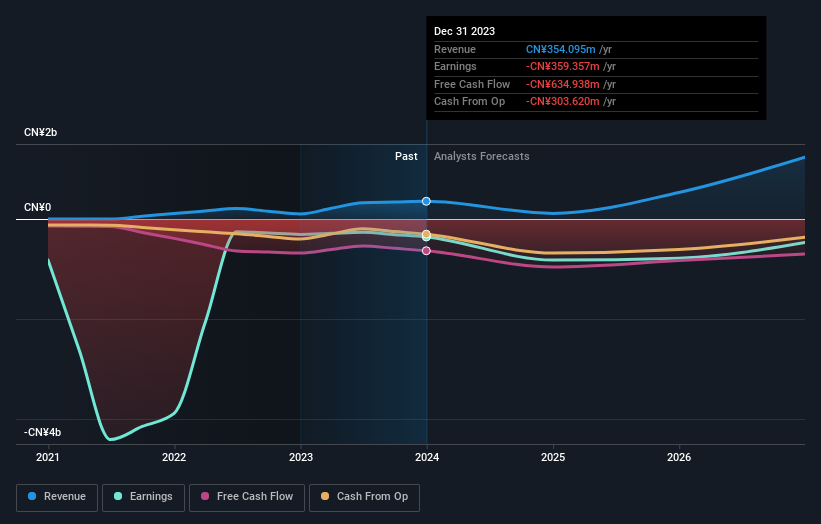Both retail investors who control a good portion of Keymed Biosciences Inc. (HKG:2162) along with institutions must be dismayed after last week's 6.8% decrease

Key Insights
- Keymed Biosciences' significant retail investors ownership suggests that the key decisions are influenced by shareholders from the larger public
- The top 10 shareholders own 50% of the company
- 29% of Keymed Biosciences is held by Institutions
If you want to know who really controls Keymed Biosciences Inc. (HKG:2162), then you'll have to look at the makeup of its share registry. And the group that holds the biggest piece of the pie are retail investors with 38% ownership. In other words, the group stands to gain the most (or lose the most) from their investment into the company.
Following a 6.8% decrease in the stock price last week, retail investors suffered the most losses, but institutions who own 29% stock also took a hit.
In the chart below, we zoom in on the different ownership groups of Keymed Biosciences.
View our latest analysis for Keymed Biosciences

What Does The Institutional Ownership Tell Us About Keymed Biosciences?
Institutional investors commonly compare their own returns to the returns of a commonly followed index. So they generally do consider buying larger companies that are included in the relevant benchmark index.
As you can see, institutional investors have a fair amount of stake in Keymed Biosciences. This can indicate that the company has a certain degree of credibility in the investment community. However, it is best to be wary of relying on the supposed validation that comes with institutional investors. They too, get it wrong sometimes. If multiple institutions change their view on a stock at the same time, you could see the share price drop fast. It's therefore worth looking at Keymed Biosciences' earnings history below. Of course, the future is what really matters.

Hedge funds don't have many shares in Keymed Biosciences. Looking at our data, we can see that the largest shareholder is Moonshot Holdings Limited with 28% of shares outstanding. In comparison, the second and third largest shareholders hold about 5.0% and 4.9% of the stock.
We also observed that the top 10 shareholders account for more than half of the share register, with a few smaller shareholders to balance the interests of the larger ones to a certain extent.
Researching institutional ownership is a good way to gauge and filter a stock's expected performance. The same can be achieved by studying analyst sentiments. There are plenty of analysts covering the stock, so it might be worth seeing what they are forecasting, too.
Insider Ownership Of Keymed Biosciences
The definition of company insiders can be subjective and does vary between jurisdictions. Our data reflects individual insiders, capturing board members at the very least. Company management run the business, but the CEO will answer to the board, even if he or she is a member of it.
I generally consider insider ownership to be a good thing. However, on some occasions it makes it more difficult for other shareholders to hold the board accountable for decisions.
Our data cannot confirm that board members are holding shares personally. It is rare to see such a low level of personal ownership, amongst the board (and it is possible that our data might be incomplete). Concerned investors should check here to see if insiders have been selling or buying.
General Public Ownership
The general public, who are usually individual investors, hold a 38% stake in Keymed Biosciences. While this size of ownership may not be enough to sway a policy decision in their favour, they can still make a collective impact on company policies.
Private Company Ownership
Our data indicates that Private Companies hold 28%, of the company's shares. It's hard to draw any conclusions from this fact alone, so its worth looking into who owns those private companies. Sometimes insiders or other related parties have an interest in shares in a public company through a separate private company.
Next Steps:
It's always worth thinking about the different groups who own shares in a company. But to understand Keymed Biosciences better, we need to consider many other factors. Consider for instance, the ever-present spectre of investment risk. We've identified 2 warning signs with Keymed Biosciences (at least 1 which is concerning) , and understanding them should be part of your investment process.
Ultimately the future is most important. You can access this free report on analyst forecasts for the company.
NB: Figures in this article are calculated using data from the last twelve months, which refer to the 12-month period ending on the last date of the month the financial statement is dated. This may not be consistent with full year annual report figures.
Valuation is complex, but we're here to simplify it.
Discover if Keymed Biosciences might be undervalued or overvalued with our detailed analysis, featuring fair value estimates, potential risks, dividends, insider trades, and its financial condition.
Access Free AnalysisHave feedback on this article? Concerned about the content? Get in touch with us directly. Alternatively, email editorial-team (at) simplywallst.com.
This article by Simply Wall St is general in nature. We provide commentary based on historical data and analyst forecasts only using an unbiased methodology and our articles are not intended to be financial advice. It does not constitute a recommendation to buy or sell any stock, and does not take account of your objectives, or your financial situation. We aim to bring you long-term focused analysis driven by fundamental data. Note that our analysis may not factor in the latest price-sensitive company announcements or qualitative material. Simply Wall St has no position in any stocks mentioned.
Have feedback on this article? Concerned about the content? Get in touch with us directly. Alternatively, email editorial-team@simplywallst.com
About SEHK:2162
Keymed Biosciences
A biotechnology company, engages in the research and development of biological therapies for the treatment of autoimmunity and oncology diseases.
Good value with adequate balance sheet.

